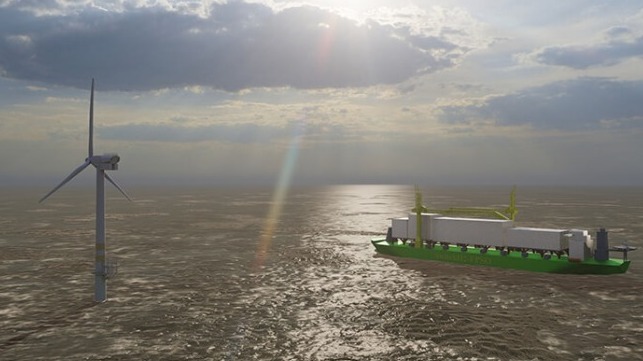Floating Ammonia Production Unit Receives Design Approval

Norway’s BW Offshore is the latest company looking to use its expertise in FPSO units and offshore production to enter the emerging field of ammonia production. Working with Netherlands-based SwitchH2, the companies have developed a design for an industrial-scale floating production unit to produce green ammonia.
The design process is moving forward with the technical feasibility having been confirmed by DNV. The design has secured Approval in Principle (AiP) from DNV and is now ready to start the basic design phase. The AiP covered all aspects of the integrated vessel concept including structural integrity, mooring, ammonia production, ammonia storage, and cargo handling, according to Conn Fagan, DNV’s Vice President, Business Development for Floating Production.
The so-called NH3 FPSO concept would be built either through the conversion of an existing Very Large Crude Carrier (VLCC) or a dedicated newbuild vessel. Receiving power primarily from a wind farm, the unit would produce hydrogen by electrolysis of seawater and nitrogen through the use of an air separation unit, combining these in an ammonia synthesis unit.
The ammonia gas produced by the unit will be condensed, and the liquid ammonia will be stored in the hull to be subsequently offloaded to an ammonia carrier. The NH3 FPSO would be permanently moored but could be relocated as necessary through planned disconnect. The offloading would be done through a floating hose, reeled from the aft ship to the shuttle ammonia carrier midship manifold.
“At BW Offshore, we leverage our offshore experience to support and expedite the energy transition by engineering next-generation floating production solutions. Achieving this AiP is an important milestone and an encouraging step towards a cleaner energy mix,” says Fredrik Savio, SVP Project Development at BW Offshore.
A competing Norwegian startup company, H2Carrier, also reported at the beginning of the year that it was also moving forward with a similar concept to produce green ammonia from its first vessel powered by Greenland’s first commercial wind farm. In this project, the onshore wind turbines would produce 1.5GW of renewable energy which would be used to supply power to H2Carrier’s floating production vessel for hydrogen and green ammonia. The hydrogen would be stored for shipment in the form of green ammonia in tanks onboard the vessel, then exported on smaller ships and carried to the international market for ammonia. It could either be used as ammonia or converted back into hydrogen.
Both companies point to the speed of development that could be achieved by applying the well-established principles of floating production and existing vessels. Similar projects have looked at fixed hydrogen production platforms placed within wind farms in Northern Europe to increase the total energy production from the sites. Both approaches are looked up are promising opportunities to meet the anticipated need for ammonia or hydrogen as a future alternative energy source.
